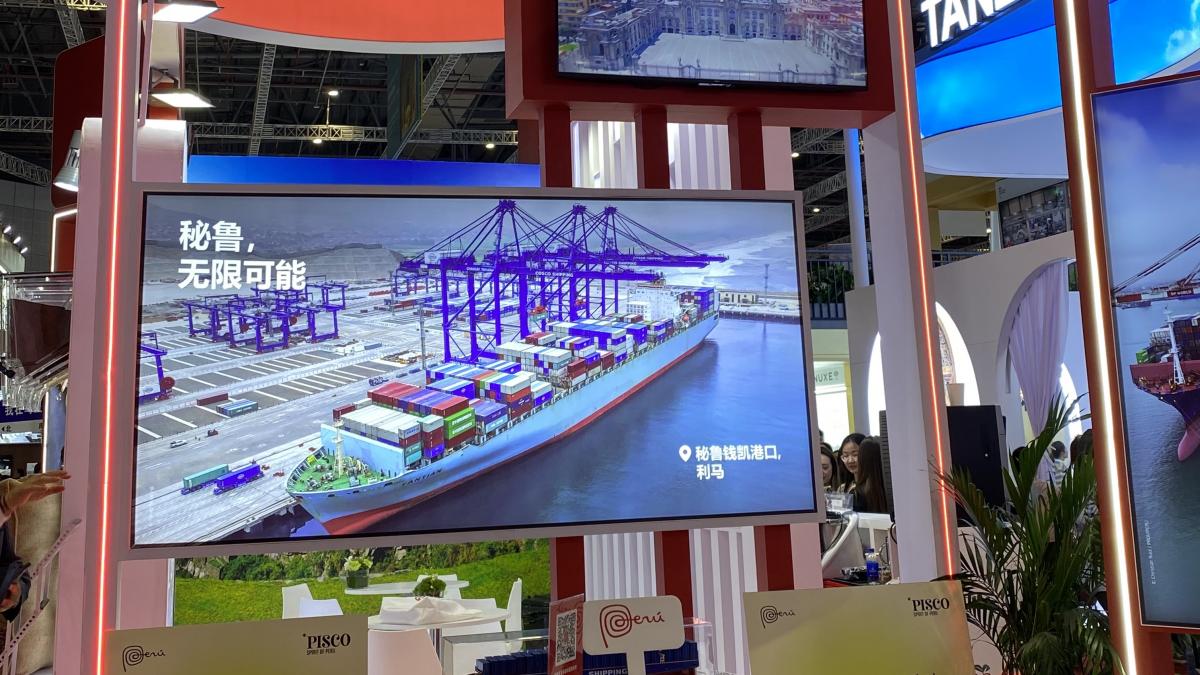You are here
Back to topPeru’s New Chancay Port To Boost Fruit Exports to China, Slashing Transit Times by One-Third

Peru’s newly built container terminal in Chancay, about 80 kilometers north of Lima, is expected to reshape Pacific trade by facilitating maritime freight between South America and Asia. The port is intended to serve vessels heading directly from Chancay to Shanghai, with the direct route cutting transit times significantly. The goal of the project is to create a new cargo distribution hub on the Western Hemisphere’s Pacific coast, in addition to the already existing Port of Long Beach in the United States and Port of Manzanillo in Mexico. Apart from handling shipments of Peruvian goods, Chancay Port will provide a new route for goods from other South American countries such as Brazil, Chile, Colombia and Ecuador. Chinese President Xi Jinping inaugurated the opening of the container terminal during his state visit to Lima for the Asia-Pacific Economic Cooperation forum on Nov. 13–15.
The $3.5 billion project was realized as part of the Belt and Road Initiative, with China’s COSCO Shipping Ports Ltd. acting as the main developer and funder. During the initial stage of operations, the port will reportedly be able to accommodate vessels carrying up to 14,000 containers, with this capacity expected to grow to 24,000 containers in the future.
.jpg)
During an interview at the China International Import Expo, Bernardo Muñoz, commercial counselor at the Consulate General of Peru in Shanghai, told Produce Report that the new port would greatly facilitate his country’s fruit exports to China owing to an expected one-third reduction in transit time. The direct route from Chancay to Shanghai will allow ships to bypass ports in Mexico and the United States, where they currently transit to take on additional goods. Instead of taking 35 days to reach their destination, shipments are anticipated to arrive in Shanghai in just 22–24 days.
According to Muñoz, Peruvian fresh produce exporters, especially small ones, currently prioritize closer markets such as the United States and Europe. The limited shelf life of many fruits and vegetables poses risks when transporting them over long distances. As a result, some exporters opt not to take these risks, particularly when dealing with a quality-conscious market like China. The opening of Chancay Port, however, may change this situation and boost exports to China in the future.
Muñoz stated that Peru currently leads the world in table grape and blueberry exports and ranks second in global avocado exports, trailing only Mexico. He emphasized that compared with two decades ago, when Peru had not yet established its present reputation as a global fruit exporter, development has been phenomenal, with much of the credit going to the lucrative Chinese market.
In response to a question regarding the grounds for the impressive growth of the Peruvian agricultural sector, Muñoz highlighted the country’s geographical and climatic advantages. According to him, the cold current that flows along Peru’s Pacific coast, where the majority of agricultural areas are located, contributes to moderate temperatures throughout the year, with winters never being too cold and summers never being too hot. Temperatures ranging from 14 to 28 degrees Celsius are often optimal for plant growth, and photosynthesis is further enhanced by proximity to the equator, which increases exposure to sunlight. Moreover, with the towering Andes preventing the high Amazonian humidity from reaching the coast, Peru’s fruit cultivation areas enjoy a relatively dry climate and are akin to a greenhouse created by nature, explained Muñoz.
In addition to a high sugar content, Peruvian fruit is rich in micronutrients owing to the concentration of minerals in the soil and water. These naturally developed nutritional aspects have helped build a strong reputation for Peruvian fruit worldwide, especially in Europe, where organic fresh produce is popular. By adopting new technologies and exploring new land suitable for farming, the Peruvian agricultural sector continues to realize its potential, said Muñoz.

Commenting on the opening of Chancay Port, Rafael del Campo Quintana, second vice president of the Exporters Association of Peru (ADEX), told Produce Report that the project opens up multiple opportunities for trade between the two continents, particularly with respect to perishable commodities. As soon as fruit is picked from the tree, it begins to decay and the clock starts ticking, said Quintana, stressing the crucial importance of transit time in the global fruit trade.
Images: © 2024 Produce Report













Add new comment